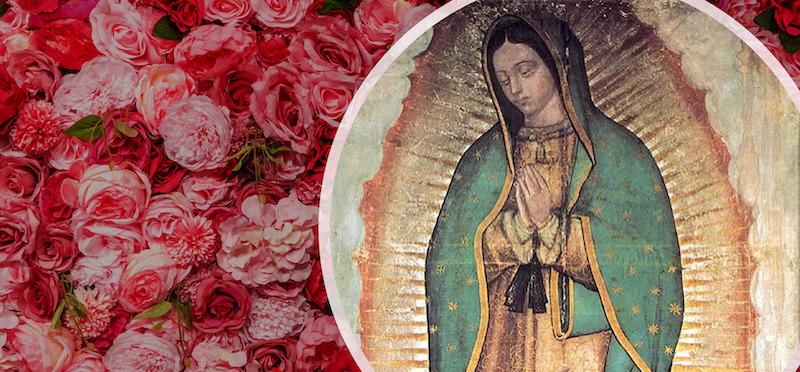I have a unique relationship with Mary. Like any mother and son, we’ve gone through ups and downs together. As a child, praying the rosary was often punishment for breaking the rules, usually disobedience against my parents. Not surprisingly, I resented it (though I’ve come to see some humor in that particular punishment for the offense).
As a young adult, the rosary became a comfort as I held it close with shaking hands through some of my life’s darkest and most broken moments. I cherished it.
I also have an image of Mary that was gifted to my wife and me on our wedding day that I meditate on often, yet there are other images of Mary that I find no connection with at all. Perhaps that is the beauty of Marian imagery — it can speak to many people in many different ways.
One particular image to which I find myself particularly drawn is the image of Our Lady of Guadalupe.
It might be the story of the image that resonates — a humble farmer encounters Mary and, through his diligence, she offers an image that provides consolation and hope to the Mexican people (and to the world). The preservation of the tilma of St. Juan Diego, upon which that image is imprinted, is miraculous. But what resonates the most is Mary’s appearance thereon.
She appears in a manner that speaks specifically to the people she is appearing to — not as an outsider, but a mother. The symbols in the image and her complexion are so indigenous to the region to the point that St. Juan Diego initially thought he beheld a native princess. In the initial apparition, Mary even speaks to him in his native language.
This should not surprise. Mary is our mother; by appearing in ways we best comprehend her, she leads us to Jesus.
In this movement of Eucharistic Revival, that can be a profound reflection for us as we gaze upon Our Lady of Guadalupe: Who are we uniquely suited to bring Christ to?
Revival is a grassroots effort; it happens within each one of us. There is no strict formula for revival outside of boldly living our faith and joyfully sharing it with others. And each of us can uniquely point to Christ and speak to specific groups of people. Each of us is a living “inculturation” of Jesus.
Sometimes, I worry that many of us resist publicly leaning into our faith out of fear it will strip away the unique attributes we possess and leave a stale version of what it is to be “Catholic.” But, there is no mold to fit into and no particular icon we need to replicate. There is a deposit of faith upon which we build our lives. Beyond that, we leverage the unique gifts, talents, cultural backgrounds, and experiences that we possess to share that faith with others.
Mary, human and not divine, shows us what the living inculturation of the Gospel looks like by revealing herself as one of the people to whom she appears. Juan Diego doesn’t see an outsider; he sees a mother and trusts her. In the same way, we encounter countless people who might not recognize many expressions of Catholicism — who would find them to seem foreign and “other” — unless they come from something authentic within us.
We can be a native representation of Christ to others when we live our faith well.
Revival happens in these moments of living inculturation as we fulfill the mission uniquely entrusted to us — and if we all lean into that reality, revival doesn’t become a possibility but an inevitable outcome.
Read about the life of St. Juan Diego.
Lee sobre la vida de San Juan Diego.

